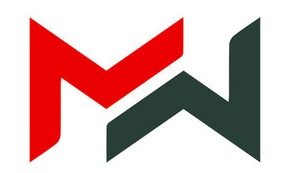Not all chevrons are equal when it comes to vehicle safety markings. Comprehending reflective chevrons vs standard markings is incredibly essential to comply with the colours and also for protecting your team on road.
Specialist reflective materials are used in the manufacturing of these chevrons and this is a type of retroreflective material, which bounces light directly back to its source. Reflected off the chevrons of a marked vehicle, they are brilliant even at night or in poor visibility such as fog. Traditionally, these markings are designed to provide high reflectivity with either prismatic or glass bead technology that complies with strict safety requirements. For Chapter 8 Chevrons, visit //www.vehiclechevrons.com/
Standard Markings Explained
Conventional vehicle markings typically do not reflect light and only employ standard vinyl or paint. They are perfect in daylight, however they do not allow a lot of visibility at night or during low-light conditions. Conventional markers depend solely on ambient light and simply do not return it to observers with nearly as much energy or contrast for safety-critical use cases.
Legal Requirements
Vehicles subject to Chapter 8 regulations (including highway maintenance, recovery vehicles and some construction fleet) need reflective chevrons. This must meet particular criteria in relation to, such as ECE 104 compliance for retroreflective materials. Suboptimal standard markings instead of compliant reflective chevrons will lead to roadside prohibitions, fines and risks on safety!
Visibility and Safety
The visibility difference is dramatic. At night, these reflective chevrons are visible from hundreds of metres behind, creating important additional milliseconds for drivers to act. Standard markings blend into the road almost entirely disappear in darkness, this creates a risk for your vehicle and team as well other users of the roadway. This improved visibility is especially vital when vehicles are idled on high-traffic roads or engaging in work within dangerous environments.
Durability and Longevity
Reflective chevrons are to the highest quality standards in terms of engineering durability and will last typically 5-7 years assuming proper maintenance. They must be able to survive extreme weather, frequent washing and exposure which will keep reflecting. Standard markings are not as long lasting and tend to wear out faster than those that offer more durability, which is key in commercial vehicle applications.
Cost Considerations
While a bit more expensive up front that traditional designs, reflective chevrons offer an unparalleled level of safety and meeting compliance regulations. In comparison to potential fines, insurance rate hikes and worse yet, the repercussions of an avoidable incident…the cost variance is nil.
Making the Right Choice
If you are using your vehicle on public highways, in construction zones or as a breakdown recovery service then reflective chevrons will not just be seen by other road users but essential for these type of vehicles. Standard markings cannot be the answer if you don’t want to compromise with safety or risk non-compliance.

Comments are closed, but trackbacks and pingbacks are open.